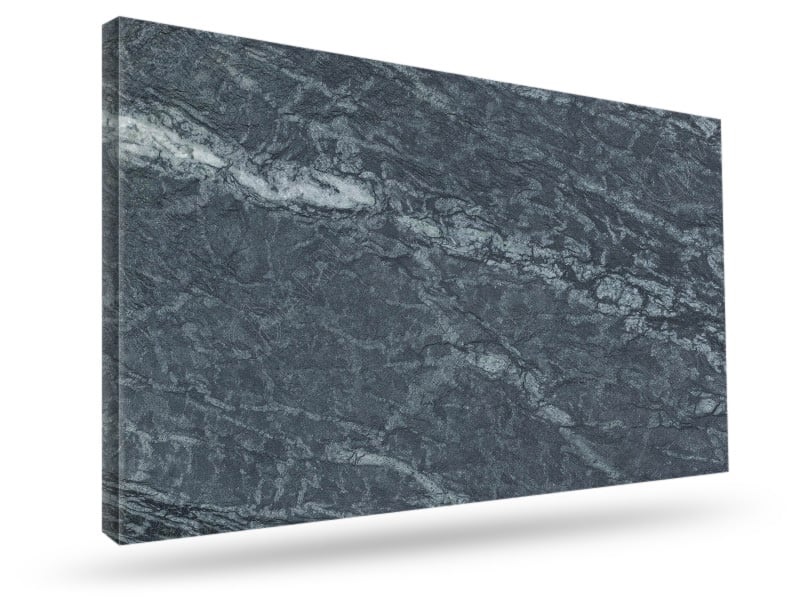If you haven’t heard of soapstone, we are here to educate you on the beauty and history of this natural stone. It’s becoming a more and more popular material for home applications, particularly for kitchen and bath countertops, tub surrounds, and backsplashes. It’s even used in fireplaces and wood stoves! This stone, which happens to date back to the Stone Age, is a beautiful and versatile addition to any room in your home.
What it’s Made Of
Soapstone contains high amounts of talc, giving it a soap-like texture and softer touch than other stones. Just like granite, it’s comprised of many minerals. Talc may be the main ingredient, but there are several variations across different slabs and deposits that can contain between four and eight minerals. Whether a slab of soapstone will be ideal for kitchen countertops or for sculpting purposes will depend heavily on which minerals are contained in it and how much.
Soapstone, a metamorphic rock, is created naturally through the transformation of other rock types. But soapstone itself can also convert into other types of rock known as enstatite and cristobalite. This occurs when it is heated to temperatures between 1,830–2,190 °F. At this point, it becomes a much harder stone with high levels of durability and electrical properties.
History
Soapstone was used as far back as the Stone Age, when it was discovered that this material was very versatile and easy to carve, with strong heat-resistant properties. Early humans used soapstone as cooking slabs, heating rocks, bowls and pots. It was also used well into the Bronze Age, as those heat-resistant properties made it easy to carve into tools and weapons.
You’ll see soapstone being used all over the world and in many different cultures. In the Arctic, it’s used in lamps and heating devices. Elsewhere, carved and glazed soapstone is used to make amulets, signets, carvings, tombs, bowls and pots.
Today, soapstone is best known for its use as a kitchen countertop material. Due to its low conductivity and ability to be easily shaped and fired, soapstone is used as an insulator in electrical components and materials.
Benefits of Soapstone
Soapstone slabs are available in creamy shades ranging from dark gray to white, with subtle veining appearing throughout. While featuring a less dramatic appearance than granite, soapstone’s subtle beauty is sought after by many homeowners.
Did You Know?
- Soapstone will not stain; compare that with granite and marble which stain easily.
- You can sand dents and scratches out of soapstone, followed by re-oiling it with mineral oil.
- Soapstone has a classically antique look, particularly as it ages and wears.
- You don’t need to seal soapstone like you do with granite and marble.
- Soapstone won’t scorch or burn.
There you have it! We hope you enjoyed these fun facts about soapstone.
Contact Granite Guy
Are you thinking that soapstone countertops or surrounds may be best for your kitchen countertop needs? We couldn’t agree more! Just contact us today at 508-460-7900, where you can ask any question you want of our Southborough, Massachusetts natural stone fabricators and installers. Visit our showroom, serving Eastern Massachusetts

